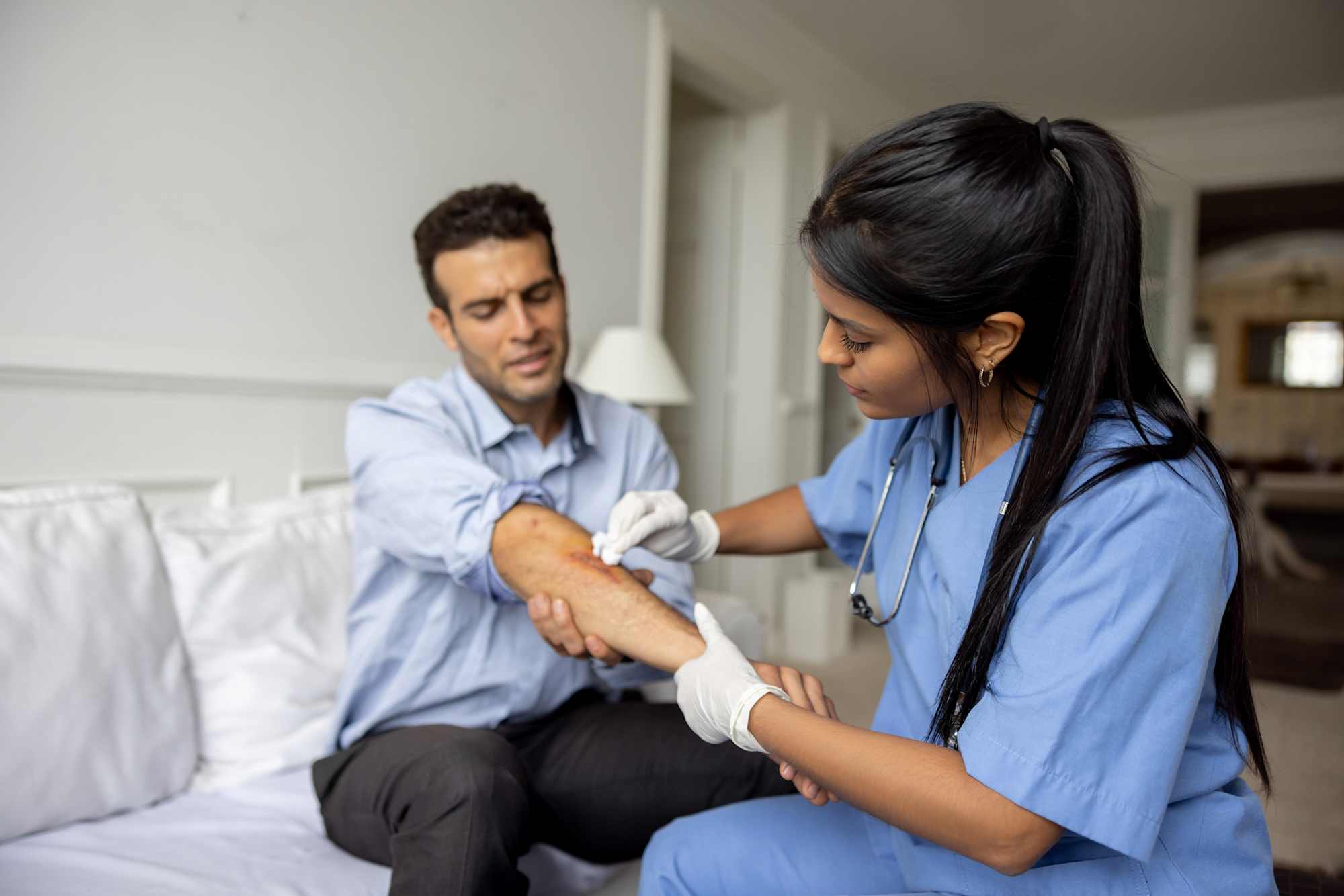Introduction
Wound care administration is an essential facet of health care, specifically in the treatment of persistent wounds and complex injuries. Whether it's a simple cut or a much more complex abscess, efficient wound management can significantly affect recovery results. Appropriate methods not only quicken recovery however likewise lower the risk of infection and issues. As healthcare specialists, understanding these techniques is vital. In this write-up, we dig deep into Wound Treatment Administration: Strategies for Successful Outcomes, encompassing numerous facets such as training for professionals, nursing education and learning, and advanced methods for taking care of complicated wounds.
1. Understanding Injury Care Management
1.1 What is Wound Treatment Management?
Wound care administration describes the systematic method to treating wounds via correct evaluation, diagnosis, and treatment methods. It consists of every little thing from cleaning and clothing injuries to surveillance healing progress.

1.2 Relevance of Wound Care
Effective wound treatment is essential because it assists protect against infections, advertises much faster healing, and eventually minimizes medical care costs connected with prolonged treatments.
2. Types of Wounds
2.1 Severe Wounds
Acute wounds are those that heal rapidly without complications. They normally result from surgical treatment or unexpected injuries.
2.2 Persistent Wounds
Chronic chronic wound care management wounds linger gradually and are typically associated with underlying problems such as diabetes mellitus or vascular disease.
3. The Duty of a Wound Treatment Specialist
3.1 What Does a Wound Care Expert Do?
A wound care expert focuses on identifying and dealing with different kinds of injuries utilizing specialized understanding and techniques.
3.2 Training Required for Specialists
To come to be an injury care specialist, one must undergo rigorous training that includes both theoretical knowledge and practical skills.
4. Wound Care Specialist Training
4.1 Review of Training Programs
Training programs for injury treatment experts vary widely but frequently include coursework on composition, physiology, and the most up to date wound treatment technologies.
4.2 Qualification Options Available
Various companies offer qualifications in wound care management that enhance integrity and proficiency in the field.
5. Wound Treatment Educating for Nurses
5.1 Significance of Specialized Training
Nurses play an important role in patient treatment; therefore, specialized training in wound administration is vital for providing top quality healthcare services.
5.2 Educational program Components in Nursing Programs
Most nursing programs currently integrate modules concentrated on basic wound care training to furnish nurses with essential abilities needed in medical settings.
6. Wound Treatment Educating Courses
6.1 Online vs On-site Courses
With the rise of electronic knowing platforms, many professionals are going with on-line wound care training courses that supply versatility without jeopardizing on quality.
6.2 Course Web content Overview
Typical training course content includes makeup pertinent to wound recovery, finest methods in dressing application, infection control steps, among others.
7. Basic Wound Care Training Essentials
7.1 Key Abilities Obtained Through Fundamental Training
Basic wound care training furnishes people with skills like cleaning methods, using dressings appropriately, and recognizing indications of infection.
7.2 Significance of Hands-on Practice
Theory alone isn't sufficient; hands-on method is important for creating self-confidence and efficiency in taking care of injuries effectively.
8. Advanced Methods in Complex Wound Care
8.1 Comprehending Complex Wounds
Complex wounds need customized interventions as a result of their nature-- often entailing deeper tissues or underlying wellness issues that impede recovery processes.
8.2 Therapy Modalities
Advanced techniques include adverse stress wound therapy (NPWT), bioengineered cells, and various other innovative approaches customized to advertise recovery in intricate cases.
9. Chronic Wound Care Management Strategies
9.1 Identifying Underlying Causes
Identifying the source of persistent wounds-- be it inadequate circulation or diabetic issues-- is vital for effective therapy plans.
9.2 Multidisciplinary Approach
A successful persistent injury monitoring strategy usually includes cooperation amongst different doctor including dietitians, podiatric doctors, and physical therapists.
10. The NDIS (National Special Needs Insurance Coverage System) & Wound Care
10.1 NDIS Assistance Services
For people under the NDIS structure calling for continuous wound administration support services are crucial to guarantee they get ideal treatment tailored to their needs.
10.2 Financing Options Available
Understanding financing options available through NDIS enables clients to gain access to necessary therapies without monetary burden.
Frequently Asked Concerns (FAQs)
Q1: What certifications do I require to end up being an injury treatment nurse?

Q2: How much time does it require to complete a wound care training course?
A: Program duration differs; however, numerous online programs can be completed within several weeks while comprehensive certification programs may take months depending on deepness and routine flexibility.
Q3: Can I manage my very own chronic wounds at home?
A: While some people can take care of small chronic injuries at home with correct education and learning from healthcare providers, severe situations must constantly be reviewed by experts to prevent complications.
Q4: Why is infection control crucial in injury management?

Q5: Exist specific products suggested for persistent injury management?
A: Yes! The selection of products depends upon the kind of chronic injury; common alternatives include hydrocolloid dressings, alginates, foam dressings etc, customized based on private needs examined by healthcare providers.
Q6: Exists continuous education and learning offered after first certification?
A: Absolutely! Lots of organizations motivate continuous expert development with workshops, workshops, online sources making certain practitioners remain current with advancements in reliable methods connected to persistent wound treatment management.
Conclusion
In verdict, effective Wound Treatment Administration: Techniques for Effective Outcomes rely heavily on experienced specialists who comprehend both standard principles and progressed methods important for promoting optimum recovery problems throughout varied individual populaces-- from acute injuries needing prompt interest to complex chronic injuries calling for ongoing assessment and intervention techniques customized in the direction of all natural health goals. By focusing on education and learning with comprehensive training programs created particularly around advancing standards within this dynamic area-- healthcare specialists can enhance their capability supplying phenomenal solution while making certain positive individual experiences yielding effective results over time.